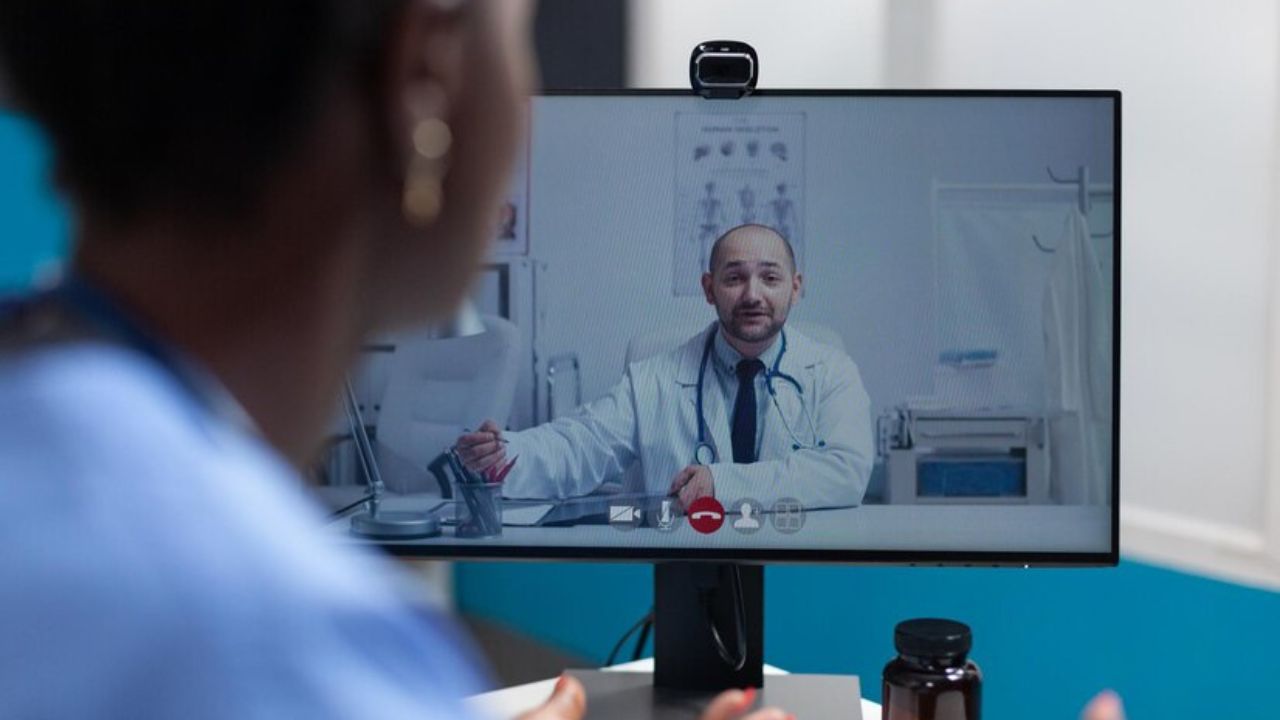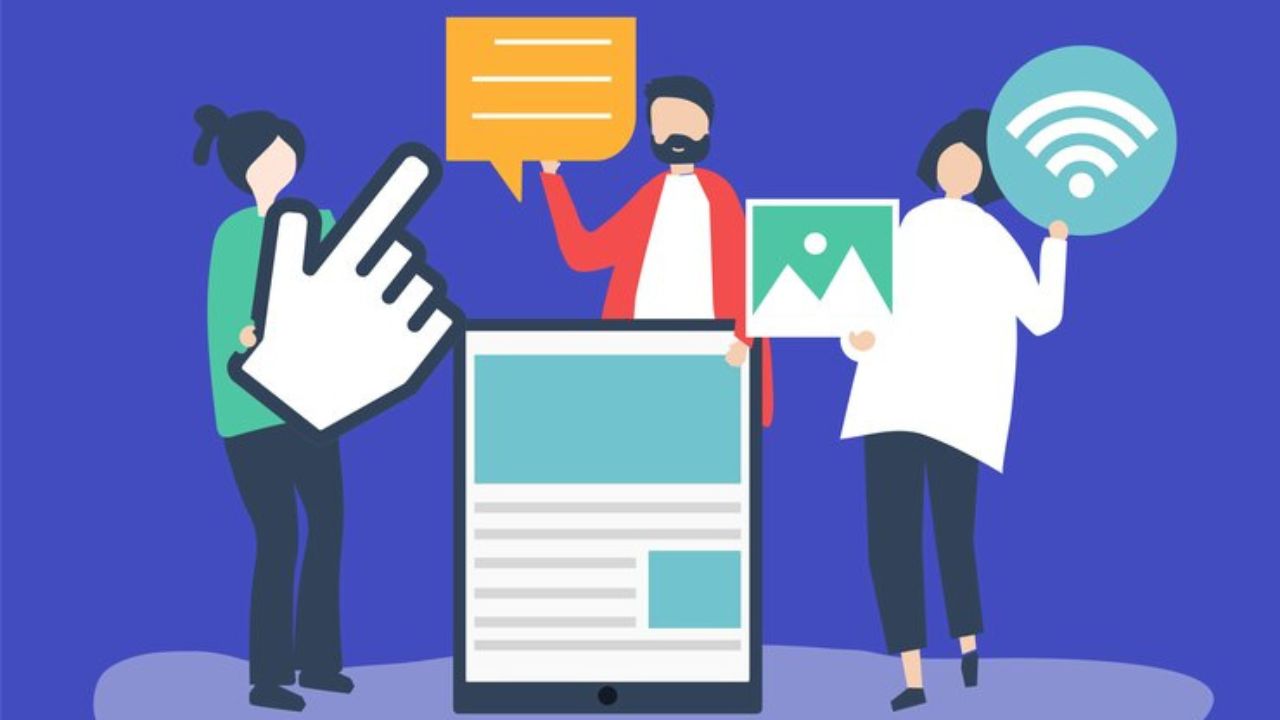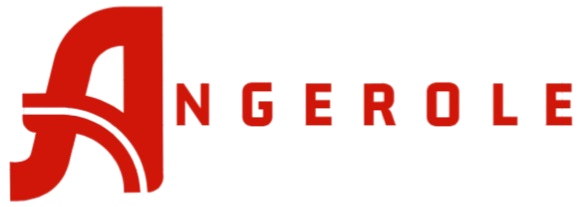HEALTH
Florida mandated reporter for health care professionals course online

A warm Florida mandated reporter for health care professionals course online morning where the rising sun streaks the horizon with hues of lavender and gold. Just as nature sets the stage for another glowing day, health care professionals in Florida play a pivotal role in protecting their communities. But safeguarding individuals—especially vulnerable children and adults—requires more than compassion. It demands knowledge, vigilance, and adherence to state laws. That’s where the Florida mandated reporter for health care professionals course online steps in.
Designed for health care professionals, this online course equips mandated reporters with the training needed to identify and respond to potential cases of abuse, neglect, or exploitation. Whether you’re a seasoned practitioner or just starting your career in the Sunshine State, taking this course is not just a legal requirement but a commitment to care.
Throughout this blog, we’ll explore the essential elements of the Florida mandated reporting requirements, guide you through the benefits of an online course, and help you choose the right one. By the end, you’ll know exactly how to stay compliant while fostering a safer, healthier community.
What is a Mandated Reporter?
A mandated reporter is a professional legally required to report any reasonable suspicion or knowledge of abuse, neglect, or exploitation of vulnerable individuals, such as minors, elderly adults, or people with disabilities. Health care professionals, by virtue of their roles, are on the front lines of observing physical, emotional, and behavioral signs that others might miss.
The Florida law clearly outlines the responsibility of mandated reporters. Per Florida Statutes, Chapter 39.201, anyone aware of or suspecting child abuse, abandonment, or neglect must report it to the Florida Abuse Hotline. For vulnerable adults, Chapter 415.103 mandates similar requirements. Failure to do so could result in legal consequences—but most critically, could mean leaving someone at risk.
Yet, identifying such cases can be challenging. Subtle changes in behavior, unusual injuries, or inconsistent stories can easily go unnoticed without proper training. This is where an online mandated reporter course becomes invaluable.
Why Mandated Reporter Training is Crucial for Health Care Professionals
1. Confidence in Identifying Warning Signs
Without training, you may second-guess whether a certain bruise, behavior, or statement is cause for concern. A comprehensive mandated reporter course sharpens your ability to recognize the signs of abuse and neglect, empowering you to act decisively. You’ll learn to interpret what might otherwise seem like mere “red flags.”
2. Protect Your Patients and Practice
For health care professionals, the responsibility goes beyond patient care. Legal compliance in mandated reporting protects not only the vulnerable individuals you serve but also your medical practice. Proper training ensures that you understand the nuances of liability, confidentiality, and documentation.
3. Smarter Reporting
Making a report isn’t just about picking up the phone. Reporting includes gathering key details while respecting patient privacy laws like HIPAA. An online course walks you through these processes step-by-step, ensuring your reports are accurate, thorough, and timely.
The Magic of Taking the Course Online
Gone are the days of rushing to in-person training sessions, flipping through binders, and juggling packed schedules. With online training, you can finally sip that second cup of coffee while honing your mandated reporting skills at your own pace.
Here’s how an online course transforms your learning experience:
1. Anywhere, Anytime Access
Whether you’re catching a few quiet minutes during a shift or curling up in a cozy nook at home, online courses are available whenever you are. Modules are designed to fit into your busy schedule.
2. Engaging, Interactive Content
The courses don’t just lecture; they immerse you. Expect real-world case studies, quizzes to test your knowledge, and video demonstrations that bring situations to life.
3. Certification Made Easy
Upon completion, a printable certificate is often instantly available in your inbox. This not only proves your compliance but can also serve as a valuable addition to your professional portfolio.
What to Look for in an Online Mandated Reporter Course
Choosing the right online course can feel daunting. But don’t worry—here’s a checklist for selecting one that best suits your needs as a Florida health care professional.
1. Florida-Specific Training
Always ensure the course is tailored to Florida state laws and reporting protocols. The guidelines for Florida differ from those in other states, so state-specific content is crucial to your compliance.
2. Accreditation and Credibility
Opt for courses accredited by reputable organizations, like healthcare boards or legal institutions. Be wary of poorly-reviewed platforms that might offer incomplete or outdated information.
3. User-Friendly Design
Look for a platform with a clean interface, clear navigation, and mobile compatibility. Your learning experience should be as intuitive as treating a patient with care and ease.
4. Expert-Driven Content
Does the course offer instruction from legal experts, health care educators, or child welfare advocates? Top-tier courses include insights from professionals well-versed in real-world situations.
Becoming the Guardian Your Community Needs
Every report you make as a mandated reporter can change the course of someone’s life. A child may find safety. An elderly individual may be protected from harm. A family facing neglect may access the support they need. By completing mandated reporting training, you’re not just fulfilling a legal obligation—you’re taking an active role in championing human dignity.
By choosing a Florida-specific online course, you’re also cementing yourself as a health care professional committed to quality, integrity, and safety.
The First Step to a Safer Florida mandated reporter for health care professionals course online Starts Here
Imagine logging into your course platform for the first time. A video opens, walking you through what to expect. The training modules guide you step-by-step, filling your toolbelt with skills, knowledge, and confidence. By the time the final quiz ends, you’re not only certified—you’re ready to protect the most vulnerable members of your community.
HEALTH
Cultivating Positive Mental Health Through Cognitive Techniques

Introduction to Cognitive Techniques
Cultivating mental well-being is a comprehensive and rewarding journey that can significantly enhance using cognitive techniques. These strategic methods are designed to optimize mental processes and promote emotional balance. They are integral to cognitive behavioral therapy in New York City and are renowned for their ability to help individuals observe and transform negative patterns. Essentially, these techniques empower people to develop healthier perspectives and responses to life’s inevitable challenges by addressing the root causes of negative emotions and thoughts. Rooted in evidence-based therapeutic practices, particularly those grounded in cognitive-behavioral approaches, these techniques provide foundational elements in promoting positive mental health. They encourage self-reflection and foster proactive management of thoughts, making them an ideal solution for breaking unproductive mental cycles. These approaches have been instrumental in helping countless individuals build resilience and attain greater overall mental wellness.
The Science Behind Cognitive Restructuring
Cognitive restructuring is a vital technique that identifies and challenges negative thought patterns impacting behavior and emotions. By altering these pathways, individuals can improve emotional regulation and resilience, leading to better mental health and reduced stress and anxiety. For more insights into this process, refer to the American Psychological Association’s resources on cognitive restructuring. Neuroscientific research supports neuroplasticity, which shows that our brains can adapt over time. This means unhelpful thought patterns can replace empowering ones, enabling individuals to influence their emotional responses consciously.
Everyday Cognitive Techniques for Mental Wellness
Incorporating cognitive techniques into daily life can be more straightforward than it appears at first glance. Techniques such as mindfulness and positive affirmations offer an accessible starting point for individuals from all walks of life. Mindfulness, in particular, encourages individuals to remain present and engaged, minimizing distractions from negative thought spirals. Conversely, positive affirmations help promote a nurturing internal dialogue. Another beneficial cognitive technique is journaling, which allows individuals to track their thought patterns, recognize cognitive distortions, and set clear, achievable goals for cognitive and emotional enhancements. Establishing a daily practice—even dedicating just a few minutes each day—can initiate significant shifts in one’s mental landscape. Such methods serve as coping mechanisms for stress and tools for fostering a positive and resilient mental framework over time.
Benefits of Cognitive Techniques in Stress Management
While stress is an immutable component of life, cognitive techniques offer powerful tools for effective management. Through positive reframing and the application of relaxation strategies, these methods aid in mitigating the detrimental effects of stress. Positive reframing involves viewing stressful situations from a different, more constructive perspective, thus reducing their negative emotional impact.
Furthermore, relaxation techniques such as deep breathing, visualization, and progressive muscle relaxation provide effective countermeasures to stress. These practices can rapidly decrease stress levels and foster a calm, collected mental state by altering physiological responses. According to numerous studies, the regular and conscientious application of cognitive techniques reduces anxiety levels and enhances emotional stability, freeing mental resources for more productive endeavors.
Integrating Cognitive Techniques into Daily Routines
Integrating cognitive exercises into everyday life maximizes their impact and makes them a sustainable part of personal routines. These practices can become ingrained and second nature by creating structured rituals incorporating mindfulness moments, affirmation exercises, or cognitive reflections. Consistency is crucial, as is permitting oneself patience for gradual improvement and acknowledging the ongoing nature of mental wellness journeys. The beauty of cognitive techniques lies in their adaptability; they can seamlessly fit diverse lifestyles and schedules, offering universal applicability across various contexts. Even brief, consistent intervals of practice can build cumulative effects over time. The key is to commit to regular practice and recognize each small step forward as a meaningful achievement in improving mental health.
Common Misconceptions About Cognitive Techniques
Despite their profound benefits, cognitive techniques remain surrounded by common misconceptions. One prevalent myth is that these methods require overwhelming effort or promise swift, effortless results. Effective cognitive transformations hinge on gradual, consistent adjustments cultivated over time. Another misconception surrounds the nature of the effort involved. At the same time, dedication is essential; cognitive techniques are manageable and can become integral to daily life without significant disruptions or adaptations. Their personalized nature allows individuals to proceed at their own pace, making these practices adaptable and accessible to a broad audience.
Real-Life Examples and Success Stories
Numerous success stories from individuals who have embraced cognitive techniques echo the transformative power of these techniques. People from diverse backgrounds have documented their journeys, highlighting how these methods have helped them overcome issues such as anxiety, depression, and workplace stress. For instance, one professional utilized daily mindfulness routines and cognitive restructuring to manage her anxiety and gain tools for calmly navigating high-pressure situations. Similarly, many have harnessed the power of these techniques to foster greater emotional intelligence and interpersonal skills. These stories substantiate the universal applicability of cognitive techniques and underscore the profound personal growth they can facilitate. They serve as real-world validations of the benefits accompanying a commitment to cognitive practices and illustrate the adaptable nature of these techniques for individuals facing various life challenges.
Resources and Further Reading
Resources are available for those eager to delve deeper into cognitive techniques. Literature, podcasts, and online courses offer expansive overviews and detailed practical applications for those looking to refine their understanding and practice of these valuable skills. Organizations like Mental Health America provide extensive mental health tools to expand your knowledge and apply cognitive strategies. Whether new to cognitive techniques or seeking to build on an existing foundation, these resources offer helpful information and guidance for your mental wellness journey.
HEALTH
HelpInUs.net: The Guide with Information About Its Explanations and Advantages

Life can be overwhelming, but what if there was an online platform designed to simplify your world—whether it’s addressing your learning goals, maximizing your productivity, or helping you tackle personal projects? That’s where HelpInUs.net steps in. With an impressive array of tools and expert tutoring services all in one place, HelpInUs.net is redefining convenience and efficiency for individuals across the globe.
This blog will guide you through the features and advantages of HelpInUs.net, helping you understand how this comprehensive platform can transform your daily life.
What is HelpInUs.net?
At its core, HelpInUs.net is an all-in-one platform offering a unique blend of digital tools, expert guidance, and resources. Whether you’re a student gearing up for exams, a professional handling complex projects, or anyone looking for practical, skill-enhancing insights, HelpInUs.net has the right solutions.
The website caters to a wide range of needs, from providing expert tutoring services to offering online tools that make tedious tasks effortless. It’s a place where growth meets accessibility, enabling you to tackle challenges efficiently while discovering new ways to excel.
Why HelpInUs.net Stands Out
HelpInUs.net isn’t just another online assistance platform. Its innovative features make it a reliable, user-friendly destination for those ready to take their productivity and learning to the next level:
- A Broad Array of Tools
Need help with project planning, calculations, or file conversions? HelpInUs.net provides a suite of powerful tools designed to streamline time-consuming tasks, saving you hours of work.
- Expert Tutoring Services
For individuals who crave deeper learning or guidance, HelpInUs.net connects you with competent tutors eager to share insights tailored to your goals. Topics range from academics to advanced professional skills—designed to suit learners of all types.
- Personalized Resources
Every service provided by HelpInUs.net is curated with care, ensuring relevance to your unique objectives. Access templates, tips, and resources that align perfectly with your preferences.
- Seamless Navigation
The platform’s clean, intuitive design makes it easy for users to find exactly what they need. No tech headaches—just beautifully designed simplicity.
- Global Accessibility
Wherever you are in the world, HelpInUs.net is ready to help. Its adaptable, online offerings eliminate barriers to productivity and learning, making quality assistance globally accessible.
- Community-Centered Approach
It’s more than a service—it’s a growing community of passionate individuals exploring their potential and sharing their successes.
Key Advantages of Using HelpInUs.net
What makes HelpInUs.net a must-visit platform? Here are the standout benefits:
1. Save Precious Time
Cutting through complexity is at the heart of HelpInUs.net’s offerings. By automating repetitive tasks and simplifying challenging processes, you’ll have more time to focus on what truly matters—whether that’s acing a test, preparing a stellar business presentation, or spending quality time with loved ones.
2. Boost Your Skills
Want to grow personally or professionally? HelpInUs.net’s expert tutoring services bring you closer to your ambitions. Learn from seasoned professionals who know how to break down difficult concepts and inspire practical learning.
3. Reduce Stress and Overwhelm
With its thoughtfully designed tools and resources, HelpInUs.net eliminates the chaos of juggling multiple systems and platforms. Everything you need is seamlessly consolidated into one intuitive interface.
4. Explore Your Potential
Whether embarking on a creative endeavor or solving real-world challenges, HelpInUs.net equips you with the confidence, tools, and guidance to succeed. It’s a space where potential meets opportunity.
5. Improve Productivity
By integrating smart digital tools with expert human support, HelpInUs.net helps you achieve more—faster, more effectively, and with greater precision.
How to Get Started with HelpInUs.net
It’s remarkably simple to make HelpInUs.net’s part of your everyday life! Here’s how you can get started:
- Sign Up
Head to HelpInUs.net’s and create an account. Registration is quick and effortless.
- Explore the Tools
Browse the platform for practical tools tailored to your goals, and start using them to streamline your day-to-day tasks.
- Book a Tutor
Looking for personalized guidance? Search for an expert tutor who matches your needs and schedule a session.
- Leverage Resources
Access downloadable templates, articles, and guides created to help you learn, create, and perform at your best.
- Engage with the Community
Discover insights, share experiences, or connect with others who are equally passionate about growth and productivity.
Real Users Share Their Success Stories
Here’s what people are saying about HelpInUs.net:
- “HelpInUs.net was a game-changer for my college projects. Their tools helped me cut my research time in half, and the tutoring sessions? Mind-blowing!” – Sarah J., Undergraduate Student
- “Running a business gets hectic, but HelpInUs.net makes things manageable. I use their resources daily to keep my team organized and motivated.” – Mike D., Business Owner
- “It’s like having a personal assistant and a coach rolled into one platform!” – Emily K., Freelancer
Experience the HelpInUs.net Difference
Engaging, efficient, and empowering—HelpInUs.net’s is the ultimate platform for anyone seeking to improve productivity and maximize personal and professional growth. Whether you’re a student preparing for exams or a professional navigating your career path, this one-stop solution delivers real results, fostering progress every step of the way.
Don’t just take our word for it—explore HelpInUs.net today and see how it can transform your routine. Whether you’re conquering challenges or exploring new opportunities, HelpInUs.net is your trusted companion on the road to success.
Are you ready to try it for yourself?
Sign up now at HelpInUs.net and unlock the tools and resources you’ve been waiting for!
HEALTH
Recuperate: The Science Behind Healing

Ever wondered why some scrapes heal faster than others? Or why getting a good night’s sleep suddenly makes you feel better after catching a cold? Healing is one of the most fascinating processes of the human body, involving a complex interplay of cells, systems, and signals that science is only beginning to fully understand.
This blog dives into the intricate science of healing—how your body mends itself, factors that influence recovery, and practical tips to support this natural process. Prepare to uncover the remarkable biological mechanisms that keep you thriving.
The Stages of Recuperate Explained
Recuperate is a biological orchestra where every part plays in harmony. Regardless of whether you’ve broken a bone, suffered a paper cut, or caught a virus, the process follows these three fundamental stages:
1. Inflammation – The Defense Mechanism
The first stage of healing kicks off as soon as an injury occurs. Your body sees the damage and sends out emergency “help needed” signals to nearby tissues and immune system cells.
Key components during inflammation include:
- Increased blood flow to the injured site, causing redness and swelling.
- White blood cells that swarm the area to fight bacteria and clean up debris.
- Chemical signals like cytokines that communicate between cells to ramp up the immune response.
Though swelling and soreness might be annoying, think of them as signs your body is working hard to keep infections at bay.
2. Proliferation – Building the Framework
Once the danger passes, it’s time to rebuild—quite literally. The proliferation phase can last days to weeks, depending on the injury’s severity.
Here’s what happens:
- New blood vessels form to feed the healing tissue—this is called angiogenesis.
- Fibroblasts (cells that synthesize collagen) begin creating a new extracellular matrix to support tissue regrowth.
- Granulation tissue forms at the wound site, giving it a pinkish appearance.
Think of this stage as laying down scaffolding, with collagen as the key structural material.
3. Remodeling – The Final Touch
The last stage of healing is all about polishing and strengthening. Also referred to as the maturation phase, this step can take weeks to months.
During remodeling:
- Collagen fibers are realigned along tension lines to provide strength and flexibility.
- Scar tissues form as the body completes repairs.
- Any remaining damaged cells or tissues are cleaned up.
With time, the affected area becomes as strong or even stronger than before, though scars may reduce some flexibility in certain cases.
Factors That Influence the Speed of Recovery
Healing time varies dramatically for different individuals, injuries, and circumstances. Why does one person recover in days while another takes weeks? Here are critical factors at play:
1. Nutrition
Your body requires the correct “building blocks” to heal efficiently. Proteins, vitamins like C and D, and minerals like zinc are essential to support cell regrowth and repair damaged tissues.
Pro Tip: Add foods rich in antioxidants (e.g., berries, leafy greens) to support inflammation control and immune function!
2. Age
It’s no secret—healing tends to slow with age. Why? Older adults often have reduced cell regeneration rates, weaker immune responses, and lower collagen production.
3. Rest and Sleep
Sleep is your body’s ultimate repair shop. Deep sleep triggers the release of growth hormones, which accelerate cell regeneration and tissue repair.
Quick Tip: Aim for 7-9 hours of quality sleep to maximize your healing potential.
4. Blood Circulation
A healthy blood supply ensures oxygen and nutrients reach the healing site. Regular movement, hydration, and avoiding smoking can improve circulation.
5. Type of Injury
Not all injuries heal equally. Skin wounds may take days, fractures weeks to months, and damage to nervous tissues the longest if repair is possible at all.
6. Underlying Health Conditions
Chronic conditions like diabetes can complicate and slow the healing process. High blood sugar, for example, can impair white blood cell function and collagen synthesis.
Tips to Optimize Healing
Recuperate is a natural process, but there are effective ways to support and speed it up. Here are some practical tips:
1. Eat for Recovery
Focus on:
- Protein-rich foods like chicken, fish, nuts, and tofu to fuel tissue repair.
- Vitamin C from citrus fruits to aid collagen production.
- Omega-3 fatty acids from fish to reduce excessive inflammation.
2. Stay Hydrated
Water is vital for transporting nutrients and removing waste from your system.
3. Protect the Area
Keep wounds clean and covered to minimize exposure to bacteria. For injuries like fractures, follow your healthcare provider’s guidelines on bracing and casts.
4. Listen to Your Body
Avoid rushing back into activity too soon. Trust your body’s signals, whether it’s pain or fatigue.
5. Gentle Movement
For certain injuries, mild exercises or stretches help maintain circulation, reduce stiffness, and speed up healing.
6. Practice Stress Management
Stress can suppress the immune system, delaying recovery. Incorporating mindfulness techniques, yoga, or even simple deep breathing can keep your cortisol levels in check.
The Cutting Edge of Recuperate Science
Modern science is making exciting breakthroughs to enhance and accelerate the Recuperate process.
1. Stem Cell Therapy
Stem cells have the unique ability to turn into various types of cells based on the body’s needs. Therapies using stem cells are being explored to repair extensive tissue damage, including heart and spinal injuries.
2. Growth Factors and Biologics
Platelets and growth factor proteins extracted from the patient’s blood (platelet-rich plasma) are increasingly used to boost recovery in sports injuries.
3. Smart Bandages
Special bandages embedded with sensors and drug-releasing properties are being tested to improve wound monitoring and healing in real time.
4. Genetic Advances
CRISPR and similar technologies are being studied to repair damaged or faulty genes that impede healing.
How Healing Reflects Overall Wellness
Recovery isn’t just about addressing injuries—it reflects your body’s overall health. By adopting lifestyle practices that keep you in shape (a balanced diet, regular exercise, and enough sleep), you’ll bounce back stronger from setbacks and illness.
Tracking progress can also be motivating during long recoveries. Keep a journal documenting your improvements and remind yourself that patience and self-care are as important as any treatment.
Take Control of Your Recovery
Recuperate isn’t something you passively wait for—it’s a process you can actively support. The more you understand what your body needs, the better results you’ll get.
Whether you’re dealing with a simple scrape or a long-term recovery, science backs how healthy habits supercharge the process. Take a small step today toward a healthier, quicker recovery, and if you’re looking for advanced solutions, keep an eye on exciting new innovations!
-

 TECH8 months ago
TECH8 months agoBunkr Album: An Ultimate Guide an Everything You Need to Know
-

 TECH7 months ago
TECH7 months agoSai Manimanoj Intellisoft Technologies: A Deep Dive
-

 FASHION7 months ago
FASHION7 months agoColor Lecrino: A Warm and Versatile Hue for Modern Design
-

 NEWS8 months ago
NEWS8 months agoWoodlake Condominiums News: Latest Updates You Need to Know
-

 NEWS8 months ago
NEWS8 months agoDorsten Vs Fresno Pollution Coparament: Complete Guide
-

 NEWS8 months ago
NEWS8 months agoShari Ann Chinnis Indianapolis: Understanding the Viral TikTok Story
-

 HEALTH7 months ago
HEALTH7 months agoPsychologist east hawaii health center hilo hawaii
-

 FASHION7 months ago
FASHION7 months agoFauxmoi: The Growing Hub of Celebrity Gossip And Entertainment Trends
